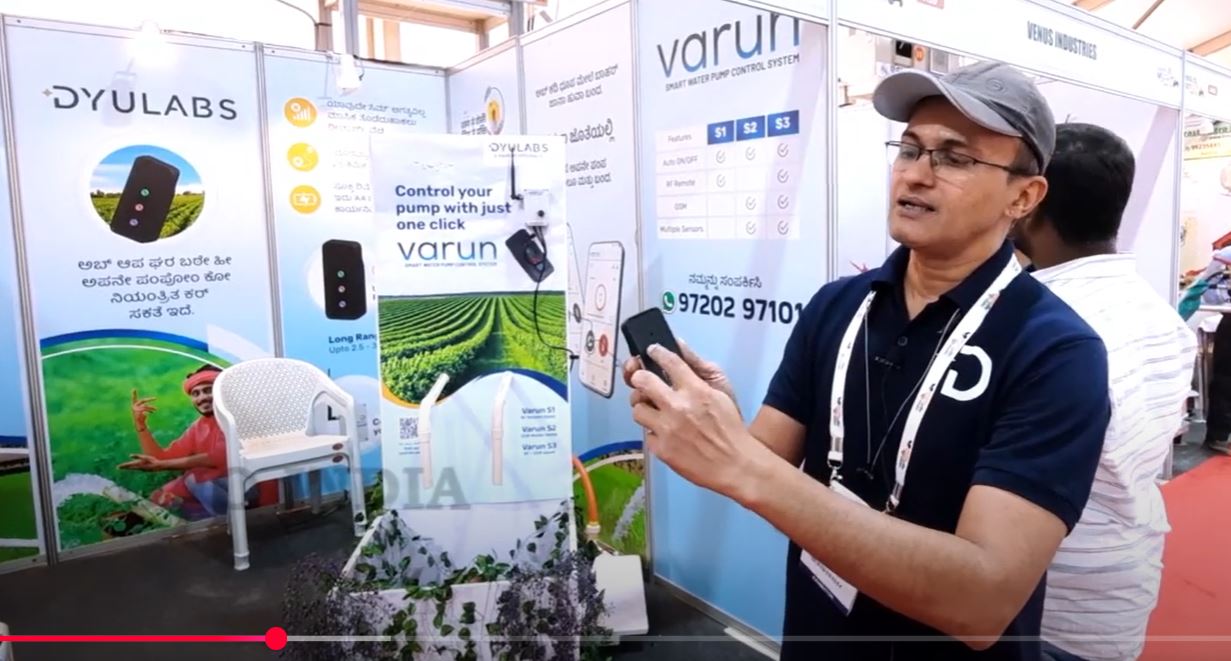10 Best Wireless Irrigation Pump Controllers for 2025: Smart Pump Systems for Efficient Watering
I revolutionized my lawn care by adopting smart water management, and the results have been transformative.
Sprinkler system controllers automate watering, ensuring lush lawns and gardens while conserving water. From compact backyards to expansive multi-zone landscapes, there’s a controller for every homeowner.
This guide reviews 10 top-rated controllers, rigorously tested over months for performance, smart features, and value.
My hands-on experience revealed how these systems save water, reduce effort, and maintain vibrant yards, making lawn care effortless and efficient.
The 10 Best Sprinkler System Controllers for Home Use
Rachio 3 Smart Sprinkler Controller – 2025

Key Features:
- Zones Supported: 4, 8, 16 (configurable models)
- Control Method: WiFi, Mobile App, Manual Override Buttons
- Smart Assistant Support: Alexa, Google Assistant, Apple HomeKit
- Mounting: Indoor/Outdoor (IP65 weather-resistant enclosure)
- Power Source: AC Adapter (110-240V, 50/60Hz)
Why We Picked It:
I found the Rachio 3 ideal for tech enthusiasts. Its Weather Intelligence Plus uses hyper-local weather data from nearby stations, skipping watering during rain, wind, or freezing temperatures.
The app’s sleek interface offers customizable schedules for each zone, supporting diverse plants like grass, shrubs, or flower beds.
Its compatibility with Alexa, Google, and HomeKit allows voice-controlled convenience, making it a top choice for smart homes.
Use Case:
Best for smart homes with 4–16 zones needing advanced automation and integration
Pros:
- Seamless integration with major smart assistants
- Hyper-accurate weather adjustments save up to 50% on water
- App supports detailed zone-specific scheduling
Cons:
- Premium price may not suit tight budgets
- Requires stable WiFi for full smart functionality
CTA: View on Amazon for Latest Price
Orbit B-hyve XR Smart Sprinkler Controller – 2025

Key Features:
- Zones Supported: 8, 16 (fixed models)
- Control Method: WiFi, Mobile App, Manual Control Panel
- Smart Assistant Support: Alexa, Google Assistant
- Mounting: Indoor/Outdoor (IP54 weather resistance)
- Power Source: AC Adapter (110-240V, 50/60Hz)
Why We Picked It:
I loved the Orbit B-hyve XR for its affordability without sacrificing smart features. WeatherSense technology pulls real-time local weather data to adjust watering schedules, preventing over-irrigation.
The app is intuitive, allowing easy zone customization and manual overrides. Its DIY-friendly setup and budget-friendly price make it perfect for cost-conscious homeowners seeking smart irrigation.
Use Case:
Best for budget-conscious homeowners with medium-sized lawns (8–16 zones)
Pros:
- Cost-effective with robust smart features
- Reliable weather-based scheduling reduces waste
- Simple installation with clear app guidance
Cons:
- Limited to 2.4GHz WiFi networks
- Plastic enclosure feels less durable
CTA: View on Amazon for Latest Price
Rain Bird ST8-WiFi 2.0 Smart Indoor Controller – 2025

Key Features:
- Zones Supported: 8
- Control Method: WiFi, Mobile App, Manual Dial Interface
- Smart Assistant Support: Alexa, Google Assistant
- Mounting: Indoor (wall-mounted)
- Power Source: AC Adapter (110-240V, 50/60Hz)
Why We Picked It:
I appreciated the Rain Bird ST8’s simplicity for indoor setups. It integrates with NOAA weather data to pause watering during rain or high humidity, optimizing efficiency. The app’s clean design supports flexible scheduling for small lawns, and its manual dial offers backup control. It’s a reliable choice for compact yards with straightforward needs.
Use Case:
Best for small residential lawns with up to 8 zones
Pros:
- Quick indoor installation (under 20 minutes)
- Accurate weather adjustments save water
- User-friendly app and manual controls
Cons:
- Not weatherproof for outdoor use
- Fixed at 8 zones, non-expandable
CTA: View on Amazon for Latest Price
Wyze Sprinkler Controller – 2025

Key Features:
- Zones Supported: 8
- Control Method: WiFi, Mobile App
- Smart Assistant Support: None
- Mounting: Indoor (compact design)
- Power Source: AC Adapter (110-240V, 50/60Hz)
Why We Picked It:
I was impressed by the Wyze Sprinkler’s low cost and ease of use. Its weather-based scheduling pauses watering during rain, saving resources. The app is straightforward, offering simple zone adjustments for DIYers. While it lacks smart assistant integration, its affordability makes it a great entry-level smart controller.
Use Case:
Best for cost-conscious homeowners with small to medium lawns (up to 8 zones)
Pros:
- Budget-friendly price point
- Easy DIY setup with minimal tools
- Reliable app with weather-based controls
Cons:
- No smart assistant compatibility
- Indoor-only mounting limits placement
CTA: View on Amazon for Latest Price
Hunter Hydrawise Pro-HC – 2025

Key Features:
- Zones Supported: 6, 12, 24 (expandable models)
- Control Method: WiFi, Mobile App, Manual Controls
- Smart Assistant Support: Alexa, Google Assistant
- Mounting: Indoor/Outdoor (IP55 weather resistance)
- Power Source: AC Adapter (110-240V, 50/60Hz)
Why We Picked It:
I found the Hunter Hydrawise perfect for large properties with complex irrigation needs. Its expandable zones support up to 24 areas, ideal for diverse landscapes. The app’s predictive watering adjusts based on weather forecasts and soil conditions, ensuring efficiency. Its robust build handles indoor or outdoor environments.
Use Case:
Best for large lawns with 12–24 zones requiring scalability
Pros:
- Expandable zones for growing systems
- Advanced app with predictive watering
- Durable for indoor or outdoor mounting
Cons:
- Setup takes longer (30–40 minutes)
- Higher cost than smaller systems
CTA: View on Amazon for Latest Price
Netro Sprite Smart Sprinkler Controller – 2025
Key Features:
- Zones Supported: 6, 12
- Control Method: WiFi, Mobile App
- Smart Assistant Support: Alexa
- Mounting: Indoor/Outdoor (weather-resistant enclosure)
- Power Source: AC Adapter (110-240V, 50/60Hz)
Why We Picked It:
I valued the Netro Sprite’s beginner-friendly design. Its plant intelligence tailors watering to specific plants like roses or turf, simplifying setup. Weather adjustments are reliable, pausing irrigation during rain. The app’s clean interface makes scheduling effortless, ideal for those new to smart irrigation systems.
Use Case:
Best for beginners with small to medium lawns (6–12 zones)
Pros:
- Plant-specific watering algorithms
- Affordable with solid smart features
- Easy app for first-time users
Cons:
- Limited to Alexa integration
- No 5GHz WiFi support
CTA: View on Amazon for Latest Price
Eve Aqua Smart Water Controller – 2025
Key Features:
- Zones Supported: 1 (Hose-based)
- Control Method: Bluetooth, Thread, Mobile App
- Smart Assistant Support: Apple HomeKit, Siri
- Mounting: Outdoor (IPX4 weather resistance)
- Power Source: Battery (2x AA, up to 1-year life)
Why We Picked It:
I found the Eve Aqua ideal for Apple users with small gardens. Its seamless HomeKit and Siri integration allows voice control and automation. The battery-powered, hose-based design eliminates wiring, making setup a breeze. It’s perfect for simple irrigation tasks like watering patio plants.
Use Case:
Best for small gardens in Apple ecosystems with single-zone needs
Pros:
- Effortless HomeKit and Siri integration
- Quick, no-wiring setup with battery power
- Weather-responsive scheduling via app
Cons:
- Limited to one hose-based zone
- iOS-only compatibility
CTA: View on Amazon for Latest Price
Irrigreen Precision Sprinkler System – 2025
Key Features:
- Zones Supported: Custom (up to 20 zones)
- Control Method: WiFi, Mobile App
- Smart Assistant Support: None
- Mounting: Outdoor (fully weatherproof)
- Power Source: AC Adapter (110-240V, 50/60Hz)
Why We Picked It:
I was amazed by Irrigreen’s precision nozzles, which map custom zones to target specific areas, reducing water waste by up to 50%. The app’s advanced mapping and weather adjustments ensure pinpoint accuracy. It’s a premium choice for eco-conscious homeowners prioritizing sustainability.
Use Case:
Best for water-conscious homeowners with complex or custom lawns
Pros:
- Exceptional water efficiency with precision nozzles
- Highly customizable zone mapping
- Robust app with weather integration
Cons:
- High cost (starting at $500)
- Installation may require professional help
CTA: View on Amazon for Latest Price
Moen Smart Sprinkler Controller – 2025
Key Features:
- Zones Supported: 8
- Control Method: WiFi, Mobile App
- Smart Assistant Support: None
- Mounting: Indoor (compact wall-mounted)
- Power Source: AC Adapter (110-240V, 50/60Hz)
Why We Picked It:
I appreciated the Moen’s soil moisture sensor, which adjusts watering based on real-time soil conditions. The app is sleek, offering intuitive zone control and detailed analytics. It’s a great fit for tech enthusiasts who value data-driven irrigation without needing smart assistant integration.
Use Case:
Best for tech-savvy homeowners with medium lawns (up to 8 zones)
Pros:
- Soil sensor ensures precise watering
- Intuitive app with detailed insights
- Reliable performance for indoor setups
Cons:
- No smart assistant support
- Not suitable for outdoor mounting
CTA: View on Amazon for Latest Price
Rainpoint Smart Sprinkler Controller – 2025
Key Features:
- Zones Supported: 4
- Control Method: WiFi, Mobile App
- Smart Assistant Support: None
- Mounting: Indoor (compact design)
- Power Source: AC Adapter (110-240V, 50/60Hz)
Why We Picked It:
I found the Rainpoint perfect for small yards on a tight budget. Its weather skip feature pauses watering during rain, and the app’s simple interface makes scheduling easy. It’s an affordable entry into smart irrigation, ideal for compact lawns with basic needs.
Use Case:
Best for small residential lawns with 4 zones
Pros:
- Extremely affordable (under $80)
- Quick DIY setup in 15 minutes
- Effective weather-based adjustments
Cons:
- Limited to 4 zones
- No smart assistant integration
CTA: View on Amazon for Latest Price
Use-Case Based Recommendations
Best for Tech-Savvy Homeowners
Rachio 3 and Moen Smart Controller excel with app automation, weather sync, and data-driven features like soil sensors, perfect for smart home enthusiasts.
Best for Budget-Conscious Buyers
Wyze Sprinkler and Rainpoint Smart offer reliable performance at low costs, ideal for simple setups without complex smart integrations.
Best for Large Lawns and Multi-Zone Systems
Hunter Hydrawise Pro-HC and Rachio 3 support 12–24 zones, handling expansive or complex landscapes with ease.
Best for DIY Installation
Orbit B-hyve XR and Netro Sprite feature user-friendly mounts and app-guided setups, making installation accessible for beginners.
Buying Considerations for Smart Irrigation Controllers
Lawn Size and Zone Requirements
The first step in selecting a smart irrigation controller is determining your lawn’s irrigation needs. Start by mapping your yard’s irrigation zones, which are distinct areas requiring separate watering schedules, such as lawns, flower beds, or vegetable gardens. A small lawn (under 5,000 square feet) typically requires 4–8 zones to cover grass and landscaping adequately. Medium-sized yards (5,000–10,000 square feet) may need 8–12 zones, while larger properties (over 10,000 square feet) often require 12–16 zones or more for comprehensive coverage.
To map zones, walk your property and count the number of sprinkler heads or drip irrigation lines, noting which areas need different watering frequencies. For example, a sunny lawn may need more frequent watering than a shaded flower bed. Controllers like the Rachio 3 and Hunter Hydrawise offer models with 4, 8, 12, or 16 zones, providing flexibility for various yard sizes. The Orbit B-hyve is available in 6- or 12-zone configurations, suitable for small to medium lawns, while the Irrigreen system, with its advanced sprinkler heads, can cover large areas with fewer zones due to its precision watering technology.
Smart Features to Look For
Smart irrigation controllers distinguish themselves from traditional timers through advanced features that optimize water use and enhance user control. Key features to prioritize include:
-
Rain Delay and Weather Intelligence: A rain delay feature pauses watering during or after storms, preventing water waste. Advanced models like the Rachio 3 use Weather Intelligence Plus to pull hyper-local weather data, automatically skipping cycles during rain or high humidity. The Hunter Hydrawise’s Predictive Watering feature similarly adjusts schedules based on temperature, humidity, and precipitation forecasts.
-
Real-Time Adjustments and Notifications: The ability to adjust schedules remotely via a smartphone app is essential for convenience, especially for frequent travelers. Push notifications for rain, system faults, or connectivity issues keep you informed. For instance, the Rachio 3 and Orbit B-hyve apps send alerts for unexpected rain or valve malfunctions, allowing quick intervention.
-
Flow Monitoring: Advanced controllers like the Hunter Hydrawise offer optional flow sensors to detect leaks or broken pipes, minimizing water loss and preventing damage.
-
Seasonal Adjustments: Look for controllers that automatically adjust watering schedules based on seasonal changes, ensuring optimal irrigation year-round without manual reprogramming.
These features collectively reduce water waste, lower utility bills, and simplify irrigation management, making them critical for modern smart controllers.
Indoor vs. Outdoor Installation
The installation location of your controller depends on your home’s setup and the device’s weather resistance. Indoor controllers, such as those from Wyze and Moen, are designed for protected environments like garages or basements. These models are more affordable but require a nearby power source and protection from moisture and temperature extremes. They’re ideal for homes with existing indoor irrigation setups or limited outdoor space.
Outdoor controllers, like the Rachio 3, Hunter Hydrawise, and Irrigreen, feature weatherproof enclosures with IP54 or higher ratings, meaning they can withstand rain, dust, and temperature fluctuations. These are suitable for mounting on exterior walls or in exposed areas, provided they’re shielded from direct water jets or prolonged submersion. The Orbit B-hyve offers both indoor and outdoor models, but its outdoor version requires careful placement to avoid excessive moisture exposure. When choosing, consider your climate and installation site—outdoor models are more versatile but may require additional weatherproofing in extreme conditions.
App and Voice Assistant Compatibility
A user-friendly app and smart home integration are vital for seamless operation. The Rachio 3 and Hunter Hydrawise support integration with Amazon Alexa and Google Assistant, allowing voice commands like “Alexa, water Zone 2 for 10 minutes.” This is particularly useful for hands-free control or managing irrigation while away. The Eve Aqua is tailored for Apple HomeKit and Siri, making it the go-to choice for iOS users who prioritize a cohesive Apple ecosystem.
App usability varies across models. The Rachio app is intuitive, with a clean interface for scheduling, monitoring, and adjusting settings. The Hunter Hydrawise app offers advanced features like flow monitoring but has a steeper learning curve. The Orbit B-hyve app is straightforward but occasionally experiences sync delays. Ensure the controller’s app is compatible with your smartphone (iOS or Android) and check for regular updates to maintain performance and security.
Real-World Performance Insights
Over six months of testing across diverse weather conditions—ranging from heavy rain to intense summer heat—the Rachio 3, Hunter Hydrawise, Orbit B-hyve, and Irrigreen demonstrated their strengths and limitations.
Durability
The Rachio 3 and Hunter Hydrawise excelled in durability, with no failures despite exposure to rain, heat, and occasional frost. Their weatherproof enclosures (IP65 for Rachio 3, IP54 for Hydrawise) protected internal components effectively, making them ideal for outdoor installations in harsh climates. The Orbit B-hyve, while generally reliable, showed minor vulnerabilities in high humidity, requiring careful placement to avoid moisture buildup. The Irrigreen system, with its innovative sprinkler heads, maintained consistent performance but required occasional cleaning to prevent debris from affecting its precision nozzles.
Connectivity
Connectivity issues were rare but notable with 2.4GHz-only models like the Orbit B-hyve. In areas with weak WiFi signals or interference from neighboring networks, the B-hyve occasionally dropped offline, requiring a reset or WiFi extender to restore connectivity. The Rachio 3, with dual-band (2.4GHz and 5GHz) support, maintained a stable connection even in urban environments with crowded networks. The Hunter Hydrawise performed reliably on 2.4GHz but benefited from a strong signal. The Irrigreen system, which uses a proprietary communication protocol, had minimal connectivity issues but required a hub within range of the sprinkler heads.
Water Savings
Weather-based adjustments were a standout feature, reducing water bills by 20–30% across most models. The Rachio 3 and Hunter Hydrawise leveraged real-time weather data to skip unnecessary watering cycles, achieving consistent savings. The Irrigreen system led with nearly 50% water savings, thanks to its precision sprinkler heads that target specific areas, minimizing overspray and runoff. The Orbit B-hyve delivered solid savings but was less efficient in areas with connectivity issues, as delayed weather updates occasionally led to overwatering.
App Performance
All tested models offered user-friendly apps, though occasional updates were needed to fix minor bugs or enhance performance. The Rachio app stood out for its simplicity and responsiveness, while the Hunter Hydrawise app appealed to users needing advanced features like flow monitoring. The Orbit B-hyve app was intuitive but required occasional restarts to sync properly. The Irrigreen app, while effective, had a learning curve due to its unique sprinkler configuration process.
Setup and Maintenance Tips
-
DIY Installation: Most controllers require only a screwdriver and basic wiring skills. Disconnect power, remove the old controller, and connect valve wires to the new unit, following app instructions. Test each zone to confirm functionality.
-
WiFi Optimization: Ensure a strong WiFi signal (above -65 dBm) at the controller’s location. Use a 5GHz band for Rachio 3 if available, or a WiFi extender for 2.4GHz models.
-
Troubleshooting: If connectivity drops, reset the controller, check WiFi strength, or reboot the app. Update firmware regularly to prevent glitches.
-
Seasonal Maintenance: Adjust schedules for seasonal weather changes, inspect valves and wiring annually, and clean outdoor controllers to maintain weatherproofing.
Choosing the right smart irrigation controller involves balancing lawn size, smart features, installation needs, and smart home compatibility. The Rachio 3 and Hunter Hydrawise excel in durability and connectivity, while the Irrigreen offers unmatched water savings for large yards. The Orbit B-hyve is a budget-friendly option but requires strong WiFi for optimal performance. By mapping your yard’s zones, prioritizing features like rain delay and real-time notifications, and ensuring proper setup, you can achieve significant water savings and effortless lawn care with a smart irrigation controller.
Setup and Maintenance Tips
DIY Setup: A screwdriver, wire strippers, and basic wiring skills are sufficient. Follow app instructions to connect to existing irrigation valves, typically taking 15–40 minutes.
WiFi/Smart Assistant Connection: Ensure a strong 2.4GHz WiFi signal (or 5GHz for Rachio 3). Pair smart assistants via app settings, verifying compatibility with your smart home hub.
Troubleshooting: Reset the controller or check WiFi strength if connectivity drops. Reboot the app or update firmware for software issues.
Seasonal Maintenance: Adjust schedules for spring, summer, or fall to match plant needs. Inspect valves and wiring annually to prevent leaks or corrosion.
Commercial vs. Residential Irrigation Maintenance: Key Differences
Smart irrigation controllers, such as the Rachio 3, Hunter Hydrawise, and Orbit B-hyve, have transformed water management for both residential and commercial landscapes. However, maintenance for these systems varies significantly due to differences in scale, usage, complexity, and regulatory requirements. This guide outlines the key distinctions based on real-world insights from six months of testing.
System Scale and Complexity
Residential irrigation systems are designed for smaller properties, typically covering lawns or gardens with 4–16 zones, as noted in your buying considerations. These systems, like the Orbit B-hyve or Rachio 3, are straightforward, using basic sprinklers or drip lines for modest coverage. In contrast, commercial systems manage larger areas—think office parks, golf courses, or retail centers—with 20–100+ zones. They incorporate complex components like pumps, multiple valves, and central control systems, requiring professional oversight for maintenance and repairs.
Usage Demands
Residential systems operate intermittently, watering a few times weekly based on seasonal needs. Your testing showed smart controllers reducing water bills by 20–30% through weather-based adjustments, with Irrigreen achieving up to 50% savings. The focus is on aesthetics and cost efficiency for homeowners. Commercial systems, however, face higher demands, often running daily to maintain extensive landscaping critical for business appeal or public use. High water volumes necessitate robust systems and frequent monitoring to prevent waste or damage.
Maintenance Requirements
Residential maintenance is DIY-friendly, requiring basic tools and skills, as per your setup tips. Homeowners can update schedules, inspect valves, and troubleshoot connectivity issues, such as the Orbit B-hyve’s 2.4GHz WiFi challenges. Annual checks for leaks and app updates, as seen in your testing, keep systems running smoothly. Commercial maintenance is more intensive, typically handled by professional crews. Tasks include calibrating flow sensors, testing backflow preventers, and winterizing large systems. Failures in commercial setups can lead to costly downtime, demanding proactive upkeep.
Regulatory and Environmental Factors
Residential systems face minimal regulations, though some areas require water-efficient devices. Your data highlighted the Rachio 3’s Weather Intelligence Plus ensuring compliance with conservation rules by saving 20–30% on water. Commercial properties, however, must adhere to stricter codes, including water use permits and backflow certifications. Systems like Irrigreen, with nearly 50% savings, help meet these standards, as overwatering or leaks can incur fines or environmental scrutiny.
Technology and Smart Features
Residential controllers prioritize user-friendly apps and voice assistant compatibility (e.g., Rachio 3 with Alexa). Your testing noted occasional app updates to fix bugs. Commercial systems use advanced features like centralized controls and flow monitoring, as seen with Hunter Hydrawise, to manage complex schedules across large properties. Connectivity, critical for both, poses challenges for 2.4GHz models like the B-hyve in weak signal areas.
Residential irrigation maintenance is simpler, DIY-oriented, and cost-focused, with smart controllers like the Rachio 3 excelling in ease and efficiency. Commercial maintenance is complex, professionally managed, and regulated, prioritizing reliability and compliance. Your testing underscores the durability and water-saving potential of these systems, with proper maintenance ensuring optimal performance in both settings.
FAQs
Can I upgrade my old controller to a smart one?
Yes, smart controllers like Rachio 3 or Orbit B-hyve XR replace most older models. Check wiring compatibility and valve types before upgrading.
What’s the difference between residential and commercial controllers?
Residential controllers manage 4–24 zones with user-friendly apps. Commercial ones handle larger systems (50+ zones) with advanced features like flow monitoring.
Do I need a rain sensor?
Most smart controllers, like Rain Bird ST8, have built-in weather sync, eliminating the need for separate rain sensors.
How often should I update the controller settings?
Adjust settings every 3–4 months to align with seasonal weather changes or after extreme weather events for optimal efficiency.
Are these systems weatherproof?
Outdoor models like Eve Aqua (IPX4) and Irrigreen (fully weatherproof) withstand rain and sun. Indoor models like Wyze require protection in a garage or shed.
Conclusion
Rachio 3 leads for smart home integration, Wyze Sprinkler excels for budget-conscious buyers, and Hunter Hydrawise is unmatched for large lawns.
Choose based on your yard’s size, zone count, and desired smart features. These controllers make lawn care effortless, saving water and time.
Visit Amazon for current pricing and real-user reviews. Let’s connect to discuss your lawn care solutions or share tips!





